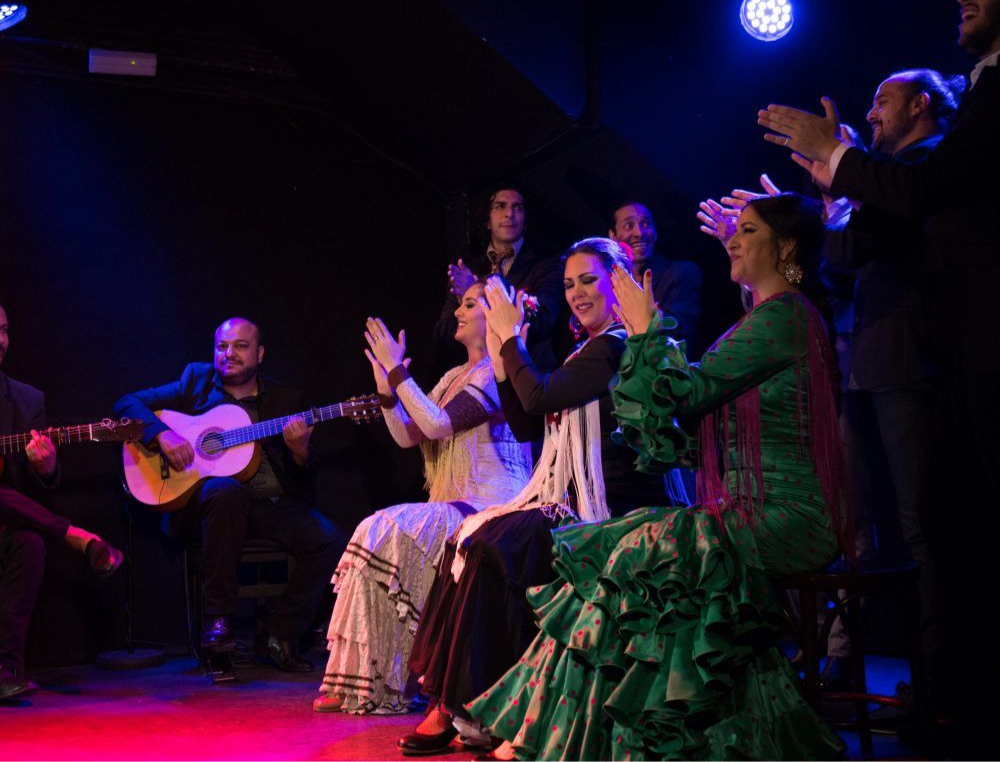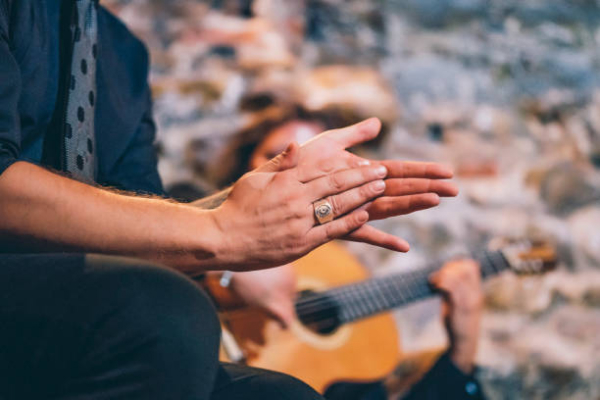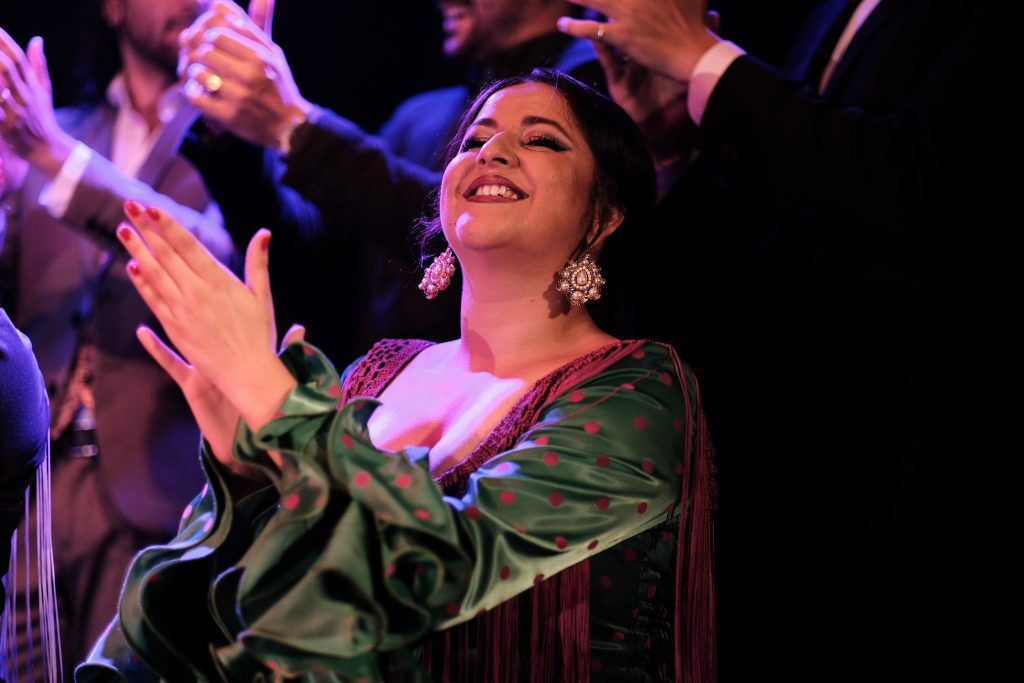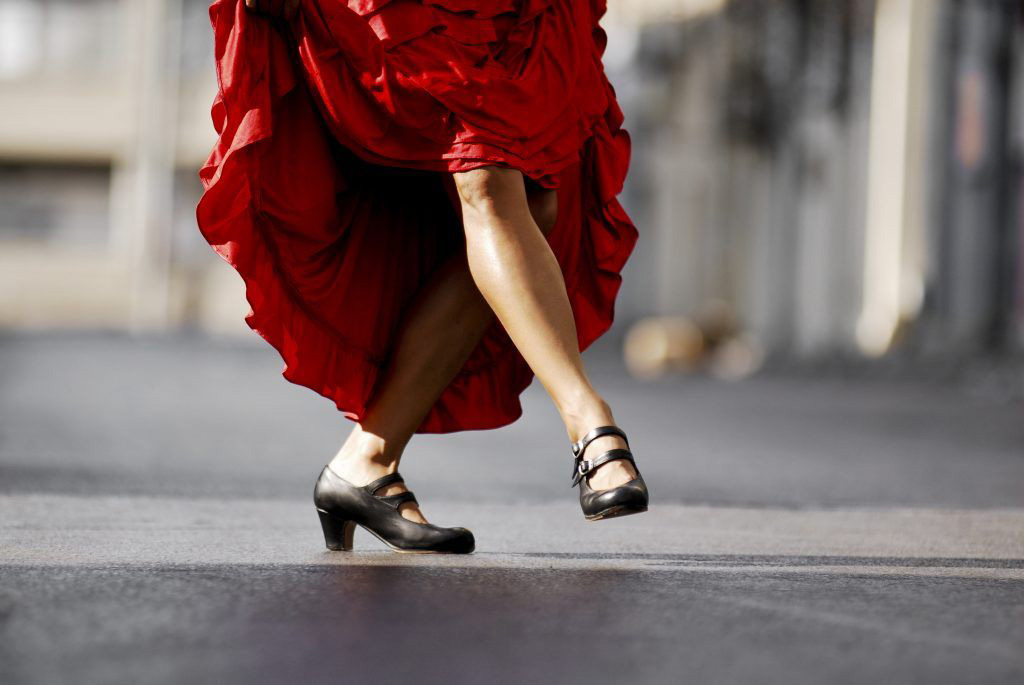

Sonidos y canciones
There are instruments that are intrinsic to the body and the soul
You won’t be able to buy this instrument anywhere. This instrument is natural, it comes from the body of the flamingos. From the flamenco’s bodies sprout these instruments laden with spontaneity and duende.
Zapateaos, palmas and jaleos
The palms
You won’t be able to buy them, but you will be able to study them.
The palms, the oldest and true percussion accompanist, dance, singing and playing flamenco. And although the heart and the emotion of the present moment are determining factors for palming, flamenco is ruled by patterns of compás that construct a universal music.

Rhythmic Patterns:
- Binary meter 2/4: Rumba, tangos, zambra…
- Ternary meter 3/4: Fandangos, alboreás, sevillanas…
- Amalgama 6/8+3×4 0 3×4+ 6×8 (Binario + Ternario): Bulerías por soleás, seguirillas, martinetes…
- Free: Tarantos, fandangos o granaínas…
It is advisable to have at least two people in a cuadro flamenco. Thus Creating harmonious phrases that overlap each other by exercising, a base and others to create different voices, countertimes and auctions.
Palms in flamenco are a rhythmic accompaniment, unique and necessary
El zapateao
Intrinsec instrument of bailaores y bailaoras
Zapateao is an inherent instrument of dancers. Its union with Flamenco emerged in Cadiz around 1850.Obviously, zapateao is also ruled by these patterns of compass, it requires an enormous rhythmic ability.In order for the magic of Flamenco to emerge, it is necessary to have a full degree of rapport between the guitar and the taconeo.
Flamenco musicians calibrate their music in ternary, binary and amalgam compass (binary + ternary). The difference between binary and ternary meter is that the first is measured in two beats or strong pulses, while the second is measured in two beats or strong- weak pulses.

The palmas and zapateaos can sound in time with the rest of the musical accompaniment, or they can split and create counter-tempos.
To clap and tap your feet, the first thing you have to sharpen is your ear.
There is no person more flamenco than the one who listens to flamenco all his life. Don’t you think so?
Jaleos
The choruses that encourage
Originally, the jaleo was associated with a certain type of flamenco dance. It was born in Jerez de la Frontera, a fact that corroborates its kinship with the bulería. It has been and is, a very generous bearer of musical elements for Flamenco.
The jaleo animates the singing, dancing and guitar playing, they are spontaneous expressions that are introduced to the beat of good flamenco performances.


The best 6 Flamenco shows in Madrid
Meet with the majesty of flamenco and its contention in the tablaos of the capital of Spain.
See shows in Madrid